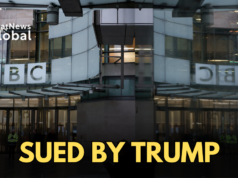It’s been a little over 24 hours since Nepal’s Prime Minister Pushp Kamal Dahal (Prachand) dumped his Nepali Congress allies and brought in the CPN-UML (Communist Party of Nepal-Unified Marxist Leninist) into the government. But this new arrangement will be as unstable as the previous one, says Yubaraj Ghimire, Editor of Deshsanchar.com based in Kathmandu.
In a chat on StratNews Global, Ghimire pointed out that Prachand and KP Sharma Oli, who heads the CPN-UML, know each other very well. They have been in a similar situation earlier, when Oli was prime minister and refused to step down in favour of Prachand despite an understanding, prompting him to tie up with the Nepali Congress. “Oli is not joining this government,” Ghimire pointed out, “so he will work to undermine Prachand’s position. His success will depend on his standing within the party because Oli has lost ground since the Supreme Court unseated him as prime minister in July 2021.” No ideology has brought them together, says Ghimire.
Nepal’s politics is all about power and position. Prachand knows he’s on a weak wicket, he has only 32 MPs in the National Assembly as against 79 of the CPN-UML. But the prime minister’s chair is hard to let go. The million-dollar question is whether India was aware of the machinations going on? Probably yes but the buzz is India tends to steer clear of these entanglements rather than be accused of interfering in Nepal’s internal affairs.
Nevertheless, the spectre of two Left parties in the saddle in Kathmandu is not something Delhi would be comfortable with. Delhi and Oli have had a tumultuous recent history. It may not have been so much about Oli flirting with the Chinese, all Nepali leaders (including the king) did so, but Oli may have crossed a line by claiming the territories of Kalapani, Limpiyadhura and Lipulekh and passing a constitutional amendment to that effect.
These tracts are in Uttarakhand measuring about 300-sq. km and have been part of India for decades. How long this coalition of the Left lasts is hard to say. But Nepal has known only political instability since the monarchy ended in May 2008. It may end up giving a fillip to growing demands that the Hindu state and the monarchy be restored.
Thirty eight years in journalism, widely travelled, history buff with a preference for Old Monk Rum. Current interest/focus spans China, Technology and Trade. Recent reads: Steven Colls Directorate S and Alexander Frater's Chasing the Monsoon. Netflix/Prime video junkie. Loves animal videos on Facebook. Reluctant tweeter.




